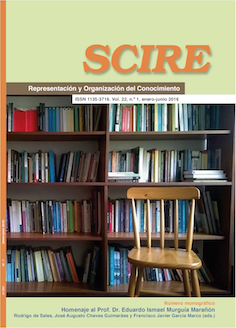E-Accessibility: from content-centric approach to communicative approach
DOI:
https://doi.org/10.54886/scire.v22i1.4286Keywords:
Accessibility, Inclusion, Interaction design, Computer interfaces, MOOC, Semiotics, Activity theory, Discursive dimensionAbstract
It is argued that traditional accessibility standards have a content-centric perspective and proposes, in response, a communicative approach of e-Accessibility where the interface is a mean of communication and action. The communicative approach finds its theoretical foundations in significant models from the Human Computer Interaction field; particularly in those that adopted Semiotics and Activity Theory as a basis for studying interface design. Its originality lies in integrating the discursive dimension to the accessibility model. A portal that offers massive open online courses (MOOC) is taken as a case study. Considering the accessible design solutions proposed for this particular case study, a comparison between the content-centric perspective and the communicative approach is made in order to show that the latter can complement the former in pursuit for a more complete communicative accessibility.
Downloads
Downloads
Additional Files
Published
How to Cite
Issue
Section
License
Copyright (c) 2016 Authors retain their copyright, but transfer the exploitation rights (reproduction, distribution, public communication and transformation) to the journal in a non-exclusive way and guarantee the right to the first publication of their work to the journal, which will be simultaneously subjected to the license CC BY-NC-ND. Authors take whole personal responsibility on fulfilling all the appropiate ethical codes and laws, and obtaining all the necessary copyright permissions regarding their articles. Institutional and self- archiving is allowed and encouraged.

This work is licensed under a Creative Commons Attribution-NonCommercial-NoDerivatives 4.0 International License.
© 1996- . Authors retain their copyright, but transfer the exploitation rights (reproduction, distribution, public communication and transformation) to the journal in a non-exclusive way and guarantee the right to the first publication of their work to the journal, which will be simultaneously subjected to the license CC BY-NC-ND. Authors take whole personal responsibility on fulfilling all the appropiate ethical codes and laws, and obtaining all the necessary copyright permissions regarding their articles. Institutional and self- archiving is allowed and encouraged.




